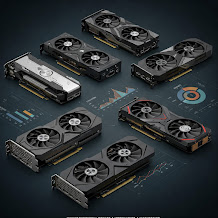China is betting on RISC-V: the future of open chips.
China is set to release its first official guidelines promoting the nationwide adoption of open-source RISC-V chips to reduce reliance on Western technology. The policy, drafted by eight government agencies including the Cyberspace Administration of China and the Ministry of Industry, Science and Technology, is expected to be released soon.
Understanding RISC-VRISC-V is an open-source instruction set architecture (ISA) that enables the development of a variety of processors, from simple microcontrollers to complex processors for artificial intelligence applications. Its open nature offers lower costs and flexibility, making it attractive to both industry and academia.
Key Chinese Companies and Their RISC-V Chips
Alibaba’s XuanTie: The XuanTie series, developed by Alibaba, offers commercial RISC-V processors for a variety of applications.
Nuclei System Technology: A startup that provides commercial RISC-V processors to chip developers, helping to grow the RISC-V ecosystem in China.
Potential Threats and Challenges
The US has expressed concerns that China’s adoption of RISC-V could help its semiconductor industry, potentially undermining existing export controls. Some US lawmakers have advocated for restrictions on US companies from collaborating on RISC-V projects with China.
Features and Benefits of RISC-V Chips
Cost-effective: Being open source, RISC-V eliminates the licensing fees associated with proprietary architectures, reducing development costs.
Flexibility: Developers can customize the ISA to meet specific application requirements, fostering innovation.
Geopolitical neutrality: Its open source nature allows for global collaboration without geopolitical constraints.
Future prospects
China’s strategic push to adopt RISC-V is expected to strengthen its domestic semiconductor industry, leading to increased innovation and less reliance on foreign technology. The move could position China as a leader in the global semiconductor market.
Developers and government officials’ statements
Chinese industry leaders have noted that the popularity of AI startups such as DeepSeek could help drive RISC-V adoption, as their models can run efficiently on less powerful chips. Sun Haitao, manager of China Mobile System Integration, emphasized that RISC-V solutions can offer cost-effective alternatives for companies seeking to adopt AI technologies.
The cost of RISC-V chips varies depending on their complexity and application. For example, basic microcontrollers (MCUs) can cost as little as $0.10, while more advanced processors, such as the SpacemiT Key Stone K1, are integrated into devices such as the BPI-F3 computer, with a total device price of around $100.
China’s initiative to promote the use of RISC-V chips highlights a significant shift in the global semiconductor industry, emphasizing open source collaboration and technological self-reliance.












Comments
Post a Comment